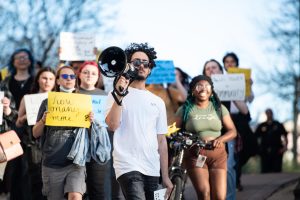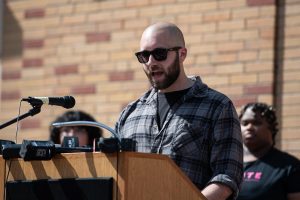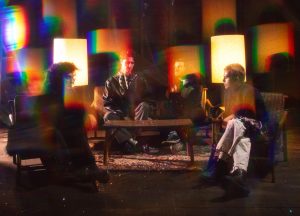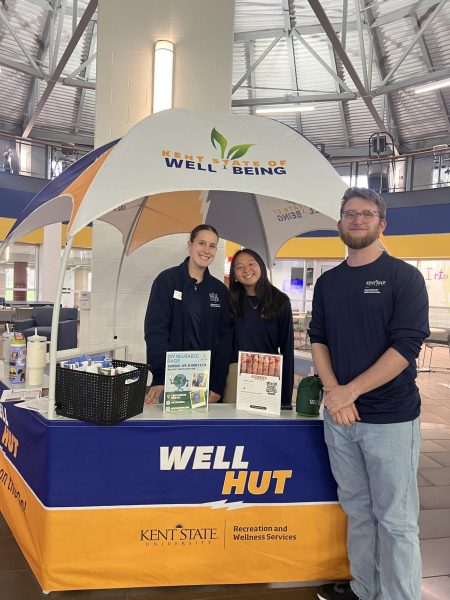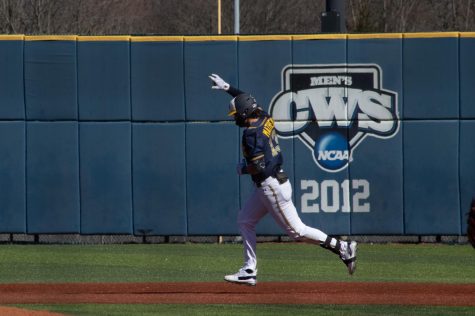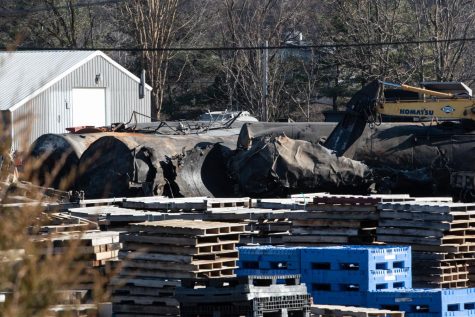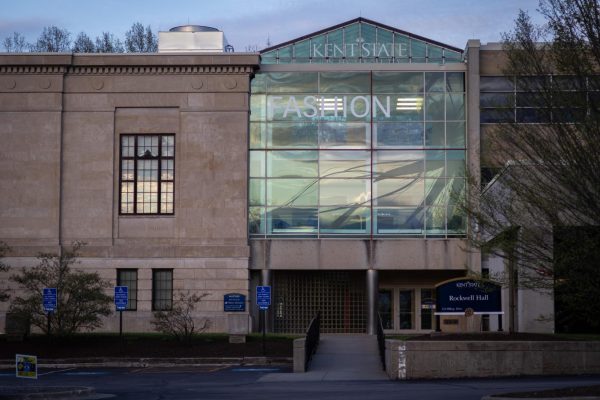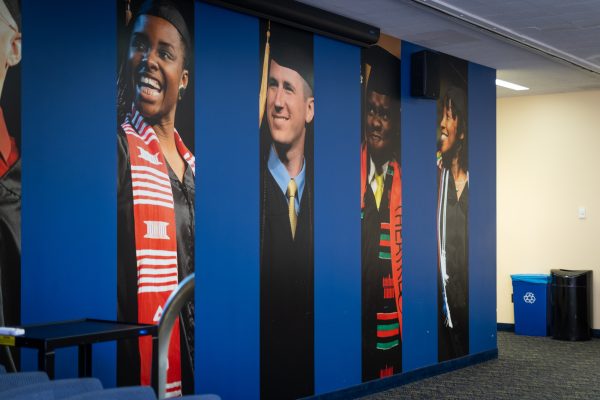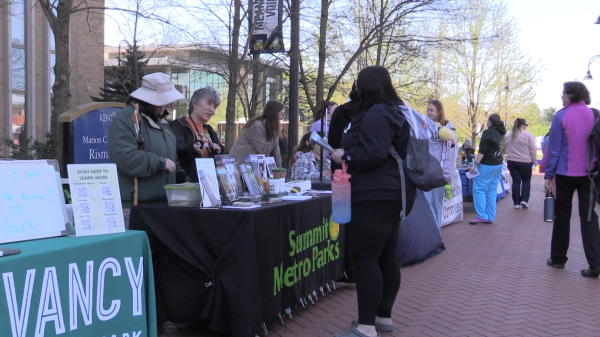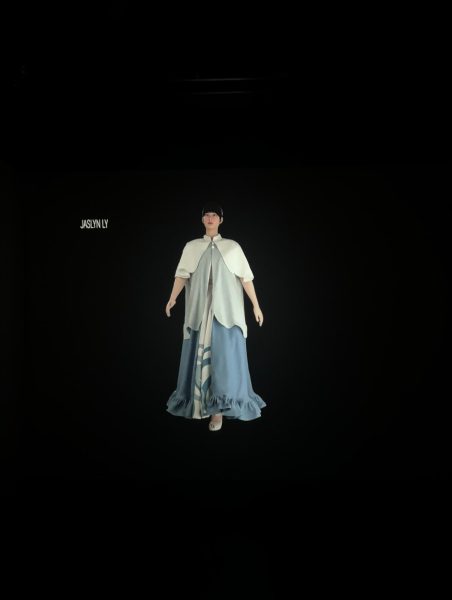Former newspaper staff recalls May 4
May 3, 2010
FBI asked faculty to ID students
Students studying journalism at Kent State in 1970 never could have imagined that they would be covering a part of history.
Susan Zimmerman, a member of the JMC faculty, was part of the Daily Kent Stater staff in 1970. She said she covered a rally on Friday where the Constitution was buried and then headed home for the weekend. When she saw on the news there had been damage to businesses downtown and the ROTC building had been burnt, she knew she had to get back to campus.
“I said to my mom and dad, ‘I gotta get back to school ASAP.’ So we came back as early Sunday morning as we could get here,” she said.
Zimmerman lived in Lake Hall, and she could see the guardsmen stationed at the old football stadium, that was next to Bowman Hall , from her window.
“It was kind of startling to see the military on our college campus,” she said.
Zimmerman said it was interesting because a lot of the guardsmen were the same age as the students.
“A lot of the guys in the National Guard were 19 years old, and we were 19 years old and we were flirting with them,” she said. “You know, they were cute boys.”
On May 4, she was standing on the front porch of Taylor Hall, where the Stater office was housed, when she saw the National Guardsmen marching across a practice field where the Gym Annex now stands.
“Suddenly, the guard as a unit whirled, knelt down and aimed their rifles into the crowd,” she said. “That was the moment when I realized these were not guys we should be flirting with. It wasn’t fun; they were taking aim at a group of essentially unarmed students.”
She said it’s true that people were throwing rocks and bricks, but nothing that could match rifles.
“It’s like that rock, paper, scissors thing,” she said. “Guns win.”
She immediately went inside the building to find her editor, Bill Armstrong.
“We heard this noise, and I said, ‘Is that helicopters?’ and he said, ‘No, that’s rifle fire,’” she said.
When she got outside again she said it was pandemonium.
“There was blood running down the sidewalk,” she said. “I had never seen any kind of — no traffic accident, nothing — I had never seen blood running down a sidewalk.”
She said she was then part of a sit-in on Blanket Hill immediately following the shootings.
“We wanted the military to get off our campus, and I for one wasn’t planning to leave until they left,” she said. “Of course, as it turned out the military didn’t leave, we left. The university shut down the campus, we all packed up our bags and went home, that was it. School did not reopen that semester.”
She found out later the FBI had asked a faculty member to identify students from photos taken at the sit-in.
“One of the faculty members at the time came up to me the following year and the FBI asked him to identify students that were at that sit-in,” she said. “He said, ‘They had a really flattering photograph of you, Ms. Zimmerman.”
Zimmerman said she didn’t ask him whether he identified her, but if someone were at a student protest in that era, as many journalism students were covering the events, then they had a file on them.
Paula Slimak, a journalism graduate student at the time, said the only day she ever worked for the Stater was on May 4, when she volunteered to write headlines for a paper that was never published because the university shut down.
“It was a difficult story,” she said. “One of the saddest things about its release of the information was the release of incorrect information.”
Throughout the chaos, it was impossible for anyone to know what was actually going on. Zimmerman, who was stringing for The Associated Press, was able to call the news organization from a payphone in Taylor Hall despite all of the phone lines on campus being jammed.
“The first report we had was that guardsmen had been killed,” she said.
Zimmerman was one of many people who passed on incorrect information.
It’s hard for students now to even consider what it was like then without cell phones and the Internet, Slimak said.
“It was very hard piecing together the information because there was such chaos,” she said. “In today’s world, the Stater could have done it online.”
Armstrong said he would love to take on the challenge of reassembling the staff and put out a May 5, 1970, issue of the Daily Kent Stater.
“I sort of still think about this, and I don’t even know if it would be possible now,” he said. “What would we write, what would we say, how would it look? Could we put together the paper knowing just what we knew then?”
One aspect Slimak felt the national and local media never covered was the passion and dedication of faculty members who worked hard to make sure students could finish classes even after the university closed.
“We had classes in garages and driveways and church basements,” Slimak said. “The faculty were so focused on making our Kent education not become expendable in spite of the tragedy.”
Both Slimak and Zimmerman recognized a huge divide between the students and the community members who disagreed with student protestors.
“People thought that the protesters were disrespectful, and they should all be arrested and thrown in jail,” Zimmerman said. “I don’t know, maybe they didn’t think people should have First Amendment rights to free speech and free expression of their viewpoints.”
Slimak felt the media could have done more to bring the students and the community together.
“It wasn’t like some of the media reported,” Slimak said. “You know they weren’t all flaming radicals.”
Slimak now gives a scholarship in the School of Journalism and Mass Communications in memory of the students killed or injured on May 4.
“I think as students go through their careers, especially as journalists, they will better understand the value of free speech,” she said. “That is truly the core of that day.”
Contact College of Communication and Information reporter Rabab Al-Sharif at [email protected].







